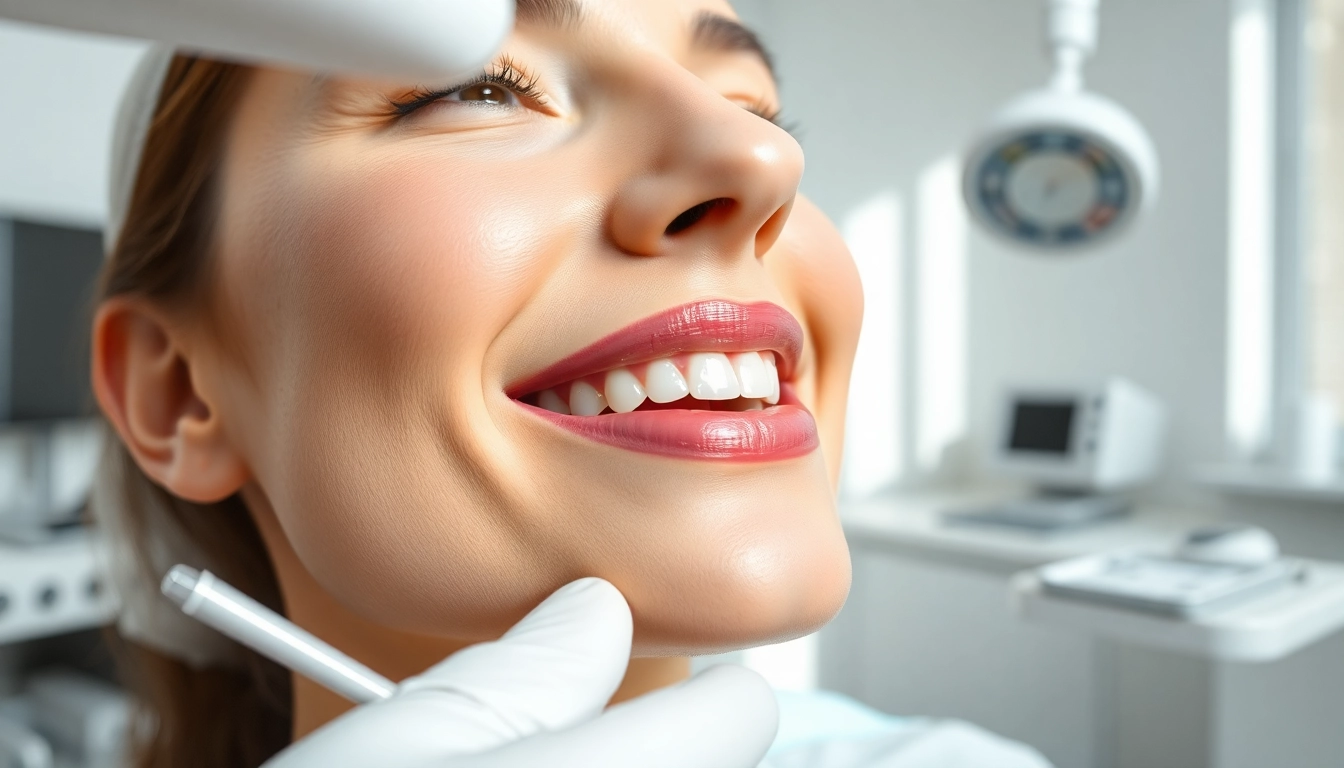Understanding Lip Augmentation
What is Lip Augmentation?
Lip augmentation is a cosmetic procedure designed to enhance the fullness and shape of the lips, making them appear more youthful and voluminous. This popular procedure can be performed using various techniques, each tailored to meet the individual needs and aesthetic goals of the patient. Through methods such as injectable fillers, fat transfers, or surgical implants, patients can achieve the enhanced lip appearance they desire. As a widely sought-after service, lip augmentation has become synonymous with enhanced facial aesthetics, offering patients more confidence and satisfaction with their overall look.
History and Evolution of Lip Augmentation
The practice of lip augmentation has evolved significantly over the years. Its origins can be traced back to early attempts at enhancing lip shape and volume using rudimentary techniques. Initially, materials such as paraffin or silicone were injected, but these methods were often met with complications and undesirable side effects. Over time, more sophisticated and safer options emerged, particularly with the development of hyaluronic acid-based fillers. These fillers, derived from natural substances found in the body, provide a temporary yet effective enhancement, often lasting six months to a year. This evolution reflects the industry’s response to patient safety and satisfaction, making lip augmentation more accessible and appealing.
Benefits of Lip Augmentation
The benefits of lip augmentation extend beyond mere aesthetics. A fuller, well-defined lip line can significantly enhance facial symmetry, thereby improving the overall appearance. Additionally, patients often report greater self-esteem and confidence following the procedure. With the ability to customize the result, practitioners can address specific concerns such as asymmetry, thin lips, or aging effects. Moreover, the procedure can be performed quickly, often requiring only a short session, allowing for instant gratification without the need for significant downtime.
Types of Lip Augmentation Techniques
Injectable Fillers for Lip Augmentation
Injectable fillers are currently the most popular method for lip augmentation. These fillers, most commonly based on hyaluronic acid, are injected into specific areas of the lips to increase volume and improve contour. The beauty of fillers lies in their versatility; practitioners can carefully manipulate the injection points to achieve a natural look while allowing for a certain degree of fullness. Other injectable options include collagen or fat-derived fillers, although these are less common due to the increased risk of allergic reactions and longer recovery times. Patients often appreciate the non-surgical nature of this method, which also allows for repeat treatments to maintain results.
Surgical Options for Lip Augmentation
For patients seeking a more permanent solution, surgical lip augmentation options are available. One popular approach involves lip implants, which are surgically inserted to create lasting volume. The procedure typically includes making small incisions either inside the mouth or at the lip corners. While this method can provide significant and long-term enhancement, it also requires longer recovery and comes with increased associated risks. As with any surgical procedure, thorough consultation and pre-operative assessments are essential to determine if this is the best course of action for a patient’s unique needs.
Comparing Lip Augmentation Methods
When considering lip augmentation options, it’s crucial to weigh the pros and cons of each method. Injectable fillers offer immediate results and are minimally invasive, often with little to no downtime. However, their temporary nature means that patients must return for regular maintenance sessions. Conversely, surgical methods provide more permanent results but come with higher costs and greater recovery time. Discussions with a qualified practitioner will help delineate the best option based on personal preferences, lifestyle, and aesthetic goals. Understanding these differences can empower patients to make informed decisions about their beauty treatments.
Preparing for Your Lip Augmentation
Consultation with Your Practitioner
Preparation for lip augmentation begins with a comprehensive consultation with a qualified practitioner. This step is vital as it allows patients to discuss their expectations, medical history, and any previous cosmetic procedures. During this meeting, practitioners will assess the patient’s lip anatomy and recommend the most appropriate technique for their desired results. Moreover, patients should be encouraged to ask questions about the procedure, recovery, and expected outcomes. Clear communication lays the groundwork for a successful lip augmentation experience.
Post-Procedure Care After Lip Augmentation
Post-procedure care is an essential aspect of the lip augmentation process. After the procedure, patients may experience some swelling and bruising, which is typically mild and temporary. Practitioners often recommend avoiding strenuous activities, excessive sun exposure, and certain medications that can increase bleeding for the first few days post-treatment. Following aftercare instructions closely can significantly enhance healing and prolong the effects of lip augmentation. Patients should also schedule a follow-up appointment to address any concerns and evaluate the outcomes.
Realistic Expectations for Lip Augmentation Results
While lip augmentation can lead to amazing results, managing expectations is crucial for patient satisfaction. Practitioners should guide patients in understanding what is achievable through the procedure, emphasizing that results can vary based on individual anatomy, technique used, and the amount of filler or implant. In most cases, results take about two weeks to fully present as swelling subsides. Patients should be patient and give their bodies time to adjust before assessing the final outcome of their lip augmentation.
Risks and Considerations
Side Effects of Lip Augmentation
As with any cosmetic procedure, there are potential risks associated with lip augmentation. Injections can cause temporary pain, swelling, bruising, or redness at the injection sites. Less common side effects may include lumps, asymmetrical results, or allergic reactions to the fillers. In rare cases, more severe complications such as vascular occlusion or infection can occur, particularly if proper techniques are not employed. Therefore, choosing a skilled and experienced practitioner is paramount in minimizing risk.
Who Should Avoid Lip Augmentation?
Certain individuals may be advised against undergoing lip augmentation procedures. Those with active infections, severe allergies, or specific medical conditions that impair healing should consider alternative options. Pregnant or nursing women are also often discouraged from pursuing cosmetic enhancements until after their breastfeeding journey. Consulting with a healthcare professional can help identify if the procedure aligns with a person’s health status and aesthetic desires.
Making an Informed Decision
Before proceeding with lip augmentation, it is vital for patients to make an informed decision based on comprehensive research and professional advice. Patients should take time to explore different techniques, understand potential risks, and consider their desired outcomes. Realistic assessments and thorough consultations can lead to a positive experience and aesthetic results that align with the patient’s goals and expectations. Ultimately, the decision should focus on the individual’s well-being and self-image rather than societal pressures.
Aftercare and Maintenance for Lip Augmentation
Ongoing Care for Enhanced Lips
Maintaining the results of lip augmentation begins with ongoing care. Patients should adhere to aftercare instructions and avoid any activities that could compromise their results. This includes avoiding harsh skincare products, excessive sun exposure, or smoking. Regularly moisturizing the lips and using sun protection can significantly increase the longevity of the results. Patients are encouraged to attend follow-up appointments to monitor their lip health and discuss touch-ups as needed.
Signs You May Need a Touch-Up After Lip Augmentation
Over time, the effects of lip augmentation may fade as the body naturally metabolizes the fillers or as the implants settle. Signs that a touch-up may be necessary include noticeable volume loss, asymmetry, or a diminished lip contour. Patients should communicate any concerns with their practitioner to determine whether a touch-up or further intervention is warranted. Regular assessments post-augmentation will help in maintaining the desired lip appearance over time.
Long-Term Considerations for Lip Augmentation
Long-term considerations for lip augmentation include understanding how your lips will change as you age. While fillers provide temporary results, surgical options can offer more lasting enhancements. Patients must be prepared for the possibility of periodic maintenance to achieve consistent results. Additionally, ongoing lifestyle choices will impact the longevity and appearance of the enhanced lips. A proactive approach to care and maintenance will not only enhance the aesthetic appeal but also contribute to overall lip health.



